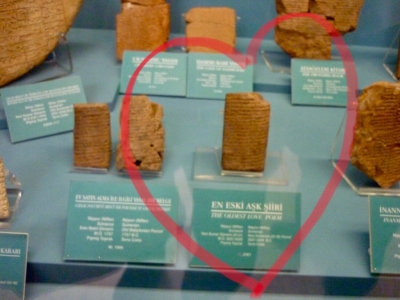
At over 4,000 years old, Istanbul #2461 is the oldest-surviving love poem in the world. The name is just a reference number for the poem, whose full name is The Love Song for Shu-Sin. Etched onto an ancient clay tablet discovered by archaeologists in the late 19th century, it comes from Sumer in southern Mesopotamia, now known as Iraq. The tablet was taken to the Istanbul Museum of the Ancient Orient and stored in a drawer until 1951 when famous Sumerologist Samuel Noah Kramer came across it. The author is unknown, but according to the Guinness World Records, “It is believed to have been recited by a bride of Sumerian King Shu-Sin, who ruled between 2037 and 2029 BC”.
A poem called Istanbul #2461 holds the Guinness World Record for being the oldest surviving love poem. The poem is written in a clay tablet and is from the times of the Sumerians who invented writing.
Accoding to historians, At around 4,000 years old, ‘Istanbul #2461’, as it’s unceremoniously called, is the oldest surviving love poem in the world.
The poem is etched into an ancient clay tablet discovered by archaeologists in Nippur, southern Iraq, during the late 19th century. Its name is just the reference number allocated by archivists at the Istanbul Museum of the Ancient Orient where it ended up.
The full name is The Love Song for Shu-Sin, though it took seven decades for this to be discovered as it lay untranslated in a museum drawer.
It comes from Sumer in southern Mesopotamia, which we know today as Iraq. Ancient Sumerians were the first people to develop a written language which used symbols to represent spoken sounds. This system of written symbols pressed into wet clay by a stylus is called cuneiform.
The ancient 4,000-year-old Sumerian cuneiform tablet is on display at the Istanbul Museum of the Ancient Orient. The tablet was unearthed in the late 1880’s in Nippur, a region in what is now Iraq, and had been resting quietly in a modest corner of the Museum in Istanbul.
The tablet in fact contains a daring — and risqué — ballad in which a priestess professes her love for a king, though it is believed that the words are in fact a script for a ceremonial re-creation of a fable by the priestess and the king, Su-Sin.
Picture Credit : Google




